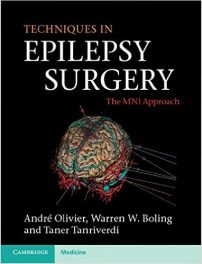Author: Graduate Management Admission Council
Publisher: McGraw-Hill – 840 pages
Book Review by: Paiso Jamakar
This is a huge book of 840 large-size pages but almost all of its content consists of sample questions, and answers or solutions to math problems.
This preparatory guide to the Graduate Management Admission Test which is reportedly taken yearly by 200,000 people in the United States and more than 1.25 million people worldwide contains more than 800 actual test questions and their answers taken from past tests.
It contains a diagnostic section that helps you determine in which of the various you are weak and therefore you where you need to spend your time and energies.
The book also has insights that help you get rid of misconceptions you may have and throw out fears about the exam that you may have developed.
It is advised that you get first get a birds’ eye view of the 10 sections this guide contains, as well as the subheadings of each section so get a clear view and decide which pages to study and review on.
Before jumping into particular sections that contain the test questions and answers (sections 4 through 10) it makes sense to prepare yourself adequately by going through the first three sections, namely What is the GMAT, How to Prepare and the Diagnostic Test.
You probably are wondering: why take the GMAT, what is its test format, and what the content of the test is like. You want to know what the quantitative and verbal questions look like, what computer skills you need, what are the test centers like, how your scores are calculated, how your analytical writing is assessed, and how tests are developed.
All of these and more of your concerns are addressed in the first section, which is a first, must read for you to develop the right attitude and frame of mind to take the GMAT successfully and score well on it.
One of your important worries may be: how exactly to prepare for taking the test. Your mind may be perturbed about how can you best prepare to take the test, how to take the practice tests in this book, which contain actual questions from past exams, how should you use the diagnostic test (the subject of the third section of this guide), what are some general test-taking suggestions to do well overall, and where can you get additional practice to score really high on the GMAT.
Sections 4 through 10 contain the actual practice questions and answers. Once you have thoroughly read the first three sections of this book, your fears would have been allayed and you will be prepared tackle the tests.
Section 4 is a math review of arithmetic, algebra and geometry. It also contains word problems. Sections 5 through 10 have the same structure and format which contain the following in order: test-taking strategies, the directions, sample questions, answer key, and answer explanations.
Section 5 is on problem-solving, section 6 on data sufficiency, section 7 on reading comprehension, section 8 on critical reasoning, section 9 on sentence correction and section 10, the final one is on analytical writing assessment.
Appendix A has the percentile ranking tables. In Appendix you have all the answers sheets to questions and problems in the different sections, namely, the diagnostic test, problem-solving, data sufficiency, reading comprehension, critical reading and sentence construction.
This book is very well organized. The questions are presented in simple two-column pages with charts and simple figures (circles, rectangles, squares triangles and other polygons) where needed.
This is a must-have review book for the GMAT. The band at the top of book tells you how popular and essential it is for your review activities: More than 1 Million Copies Sold Worldwide.”






